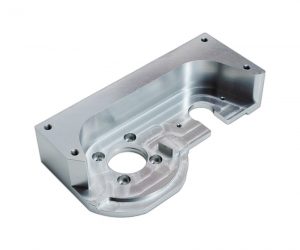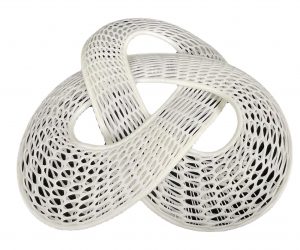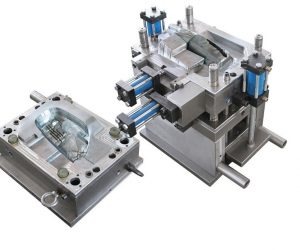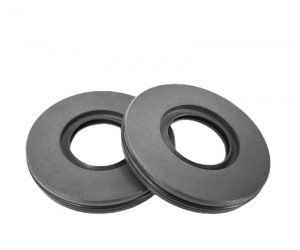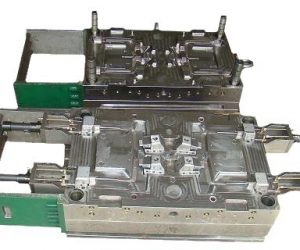After adjusting injection molding process parameters, it is essential to follow a standard procedure for exhaust in the injection mold to ensure the proper release of air or gases trapped in the cavity during the molding process. Proper exhaust helps to prevent defects such as burning, voids, and short shots. Here is a standard procedure for exhaust in injection molds:
- Mold Inspection: Before starting the production run, inspect the mold for any damage, wear, or buildup of debris that might obstruct the exhaust channels.
- Clean the Mold: Ensure that the mold is clean and free from any residual plastic or contamination that could affect the exhaust process.
- Adjust Injection Parameters: After making adjustments to the injection molding process parameters (e.g., temperature, pressure, speed), check the settings to ensure they are appropriate for the specific material and part design.
- Purge the Injection Molding Machine: Before starting the production run, purge the injection molding machine with the selected material to remove any residues from the previous material used.
- Slow Injection Speed: During the initial stages of injection, use a slower injection speed to allow trapped air to escape through the vents.
- Optimize Venting Design: Ensure that the mold has proper venting channels or vents in the areas where air is likely to get trapped. Venting design should be optimized for each part to facilitate the escape of gases.
- Mold Temperature: Maintain the mold temperature within the recommended range to minimize thermal expansion and contraction, which can lead to trapped gases.
- Monitor Process: Continuously monitor the injection molding process, paying attention to any signs of trapped air or gas, such as sputtering, burning, or bubbling on the surface of the part.
- Adjust Cycle Time: Adjust the cycle time, if necessary, to allow sufficient time for air and gases to escape before the mold fully closes.
- Check Ejector Pins: Ensure that the ejector pins are properly aligned and functioning correctly to eject the part without trapping air.
- Inspection and Fine-Tuning: After the initial production run, inspect the molded parts for any defects related to exhaust. Fine-tune the process parameters or venting design if needed.
- Maintain Proper Maintenance: Regularly clean and maintain the mold to prevent clogging of vents and ensure consistent exhaust performance.
By following this standard procedure for exhaust in injection molds, manufacturers can achieve better-quality molded parts with minimal defects and ensure the efficiency and reliability of the injection molding process.
In the process of plastic mold injection molding, we often face some problems, such as white top, black spots, shrinkage, bubbles, silver wire, flash, etc. These problems often occur in plastic products. If after adjusting the injection molding process parameters, insufficient filling, high internal stress, bubbles, etc. still occur, it is likely to be caused by the exhaust problem of the plastic mold.
Exhaust is an important part of the injection molding process, which involves the exhaust of gas in the plastic melt and the flow of gas inside the mold. When plastic melt is injected into the mold, the gases within it can become trapped in the melt, causing underfilling and the formation of bubbles. In addition, the gas inside the mold will also affect the molding process, such as causing flash and uneven shrinkage.
To solve the exhaust problem, you can take the following measures:
- Reasonably designed mold structure: By optimizing the design of the mold, increase the location and number of exhaust grooves and exhaust holes to better eliminate gas. At the same time, ensure that the cooling system of the mold can effectively reduce the temperature and reduce the generation of gas.
- Adjust injection speed and pressure: Proper adjustment of injection speed and pressure can reduce the generation of gas and the possibility of being trapped in the melt. Higher injection speeds and pressures can help gases escape faster, while lower injection speeds and pressures can reduce the risk of gases becoming compressed and trapped in the melt.
- Use appropriate plastic materials: Choosing plastic materials with a lower tendency to produce gases can reduce the occurrence of outgassing problems. Some special plastic materials can improve their exhaust performance by adding exhaust agents or changing the proportion of additives.
- Regularly clean and maintain the mold: Clean the internal and external surfaces of the mold regularly to ensure that there are no residues and dirt that affect the exhaust effect. At the same time, regularly inspect and maintain the cooling system and seals of the mold to ensure their normal operation.
In short, the exhaust problem is one of the common problems in the injection molding process of plastic molds. Through reasonable design and adjustment of injection molding process parameters, as well as selection of appropriate plastic materials and regular maintenance of molds, exhaust problems can be effectively solved and the quality of plastic products can be improved.
In the manufacturing of injection mold, the exhaust of injection mold is a very important link. The exhaust of injection mold can represent the overall structure of injection mold to the greatest extent. Even if an excellent injection mold does not have a good exhaust, it is impossible to produce products with stable quality. A good injection mold should have a good airtightness, and be able to ensure that the gas is discharged freely, rather than being highly compressed. What are the standards for injection mold exhaust? Next, let's introduce it to you.
The full exhaust structure shall be made as far as possible. The depth shall be within the plastic overflow value. Full exhaust is the best, but 1/2 of the steel shall be left on the clamping line to compensate the pressure. If the PL surface is irregular and cannot be fully vented, it is better to use a 12mm wide vent slot to the die, and the gas must finally be vented to the atmosphere. The vent slot should be processed with a milling cutter with a flat bottom and chamfer as much as possible. If a spherical milling cutter must be used, it is necessary to calculate that the processing depth is consistent with the processing depth of the flat bottom before using it. The length of the exhaust sealant is the most easily ignored by most people, and is related to the appropriate exhaust problem, On this issue, there are many different opinions about the size regulations. The specification of the material supplier ranges from 3 to 5 mm, but experience has proved that if the length is greater than 3 mm, it will no longer play a good role. Therefore, for safety reasons, we specify that the standard is 3 mm, and the exhaust depth depends on the molding material. If in doubt, you can refer to the processing specification.
One of the most common misconceptions of plastic molds is that too much exhaust leads to flaring. In fact, the opposite direction is correct. Unreasonable exhaust requires too much pressure. When gas is allowed to exhaust, the rubber will go out with the gas. The only reason for excessive exhaust leading to flaring is that the air groove is too deep. Generally, all ejector pins shall be used to exhaust as much as possible. This is especially important for large plastic parts, which of course depends on the diameter of the ejector pin. If this is not possible, the air shall be ground flat, with appropriate length and depth, and the fitting clearance of the ejector pin shall be slowed down. The flow passage, especially the large or long flow passage, must be opened for exhaust.
Another common problem is that when the parts cannot be fully vented, the last glue filling position and the next last glue filling position must be considered, and these two positions must be vented. Exhaust shall be specially considered for deep bone position, column position, small needle dispensing position or thin glue position, or flat thimble, semi needle structure, exhaust steel or even vacuum exhaust device shall be used.
A part cannot exhaust too much, although the mold closing line can do so, this will bring the following problems related to exhaust: there is not enough steel to bear pressure on the mold closing line, and the exhaust on the parting surface is pressed; The best exhaust will eventually disappear. After a certain material circulation, if there is not enough steel to compensate the pressure on the clamping line, the injection mold will bite together, and the air groove will wear. The clamping line should avoid the reduction of the clamping part of the injection mold, which is the biggest problem encountered by the large mold. For the injection mold of the front and rear mold inserts, the front and rear mold kernels cannot be assembled before the mold parting surface of the mold embryo is assembled. The correct way is to use pressure block to close the mold at the same time between the AB plates of the mold base.
The exhaust of injection mold after adjusting injection molding process parameters is a crucial step that ensures the quality of the final product. Proper exhaust can help to eliminate air pockets and bubbles that can cause defects in the final product. This article will discuss the standard for exhaust of injection mold after adjusting injection molding process parameters.
The seemingly mundane act of exhaust management in injection molding belies a complex interplay of thermodynamic forces and material science, the mastery of which dictates the success or failure of the entire process. The presence of even minute air pockets, far from being mere cosmetic blemishes, introduces insidious defects: sink marks that betray structural weaknesses, voids that compromise integrity, and warpage that renders the final product unusable. These are not simply flaws; they are harbingers of catastrophic failure, potentially leading to product recalls, financial ruin, and reputational damage. The seemingly simple act of removing trapped air transforms into a high-stakes gamble against the unpredictable behavior of molten polymers under pressure.
Defining a "standard" for exhaust is a chimera, a constantly shifting target dependent on a chaotic interplay of variables. The rheological properties of the polymer, a function of both its inherent characteristics and its thermal history, are paramount. The intricate geometry of the mold, a labyrinthine landscape of flow channels and potential stagnation zones, further complicates the issue. Furthermore, the injection molding machine itself, with its idiosyncratic pressure profiles and injection velocities, adds another layer of unpredictable complexity. While guidelines exist – ensuring vent cleanliness, strategically positioning vents to exploit pressure gradients, manipulating mold temperature to control viscosity, and judiciously adjusting injection pressure and speed – these are mere heuristics, offering only a tentative foothold on the slippery slope of optimal exhaust.
The naive approach of simply increasing injection pressure or speed, while seemingly intuitive, can lead to unforeseen consequences. Excessive pressure may induce premature mold filling, trapping air in less accessible regions. Similarly, excessive speed can generate turbulence, creating vortices that entrap air and exacerbate the problem. The optimal approach demands a nuanced understanding of the interplay between these parameters, often requiring iterative adjustments and meticulous monitoring.
The monitoring process itself demands a sophisticated approach. Simple visual inspection is insufficient. Advanced techniques, such as acoustic emission monitoring or the use of high-speed cameras coupled with computational fluid dynamics (CFD) simulations, may be necessary to fully characterize the flow dynamics and identify regions prone to air entrapment. The goal is not merely to eliminate air pockets but to achieve a state of controlled, predictable flow, minimizing turbulence and ensuring complete mold filling.
In conclusion, the management of exhaust in injection molding transcends the realm of simple guidelines. It demands a deep understanding of polymer science, fluid mechanics, and mold design, coupled with the ability to interpret complex data and adapt to the unpredictable nature of the process. The stakes are high, and the pursuit of perfect exhaust is a continuous journey of refinement and adaptation, a testament to the enduring challenge of precision manufacturing.
